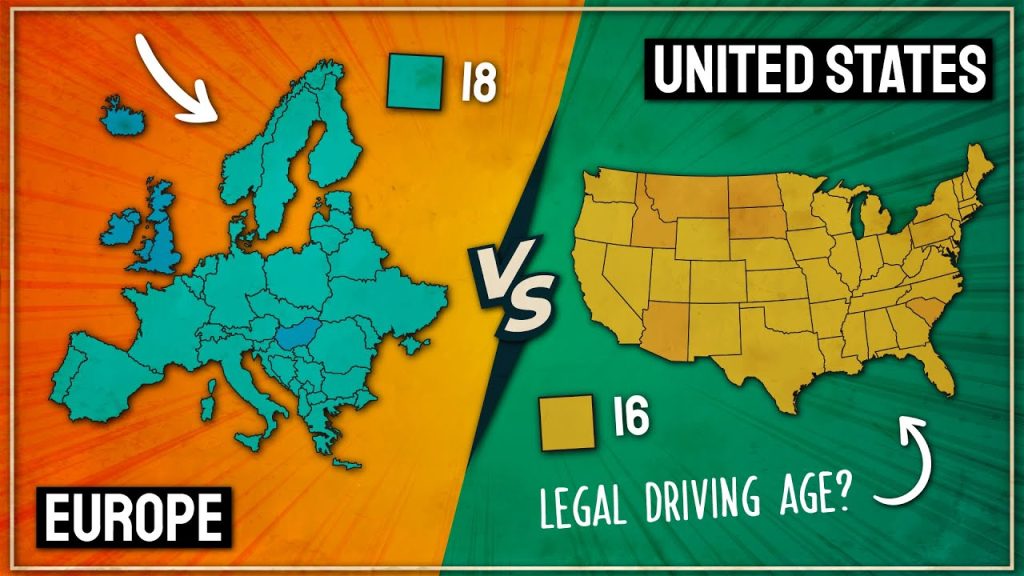In the realm of geographical proportions, a question of monumental magnitude beckons: Is Texas, the expansive southern state of the United States, truly larger than the vast expanse of the entire continent of Europe?
The answer is No, Texas is not bigger than Europe. Europe is a continent that comprises many countries, and it is larger in terms of land area than the state of Texas. Europe covers an area of approximately 10.18 million square kilometers (3.93 million square miles), while Texas covers an area of about 695,662 square kilometers (268,596 square miles).
let’s delve into the intricate tapestry of size, geography, and perception, and unveil the truth behind the intriguing query.
What is the size of Texas compared to Europe?

Texas, located in the southern part of the United States, shares its borders with Oklahoma, Arkansas, Louisiana, and New Mexico. Housing a population of roughly 24 million people, it stands as a vibrant and diverse state. Renowned for its oil industry and cattle ranching, Texas has also emerged as a hub for Southwest culture since European settlers arrived in the 16th century.
In terms of area, Texas sprawls across approximately 268,596 square miles (695,660 km²). To put this size in perspective, consider a Texas Europe size comparison and think, “How big is Texas compared to Europe?” Texas is actually larger than most of Europe!This expansive size, however, encompasses various uninhabited regions like the vast deserts in West Texas and the sprawling Llano Estacado in the eastern part.
Moreover, Houston, boasting a populace of 1.3 million, claims the title of Texas’s largest city, closely followed by Dallas, which exceeds a million residents. Among its remarkable characteristics, Texas stands as one of the most diverse states in the U.S., with over 200 languages spoken within its borders and a substantial Hispanic or Latino population. Notable cities within the state include Houston, San Antonio, Dallas, Fort Worth, and Austin.
Texas vs Europe size & factors
| Factors | TEXAS | Europe |
| Geographical Features | boasts a variety of landscapes, including deserts, plains, forests, and coastal regions along the Gulf of Mexico. | featuring iconic mountain ranges like the Alps and the Pyrenees, expansive plains, extensive coastlines along the Atlantic Ocean and the Mediterranean Sea, and several inland bodies of water. |
| Population and Urban Centers | Texas, with its population of approximately 29 million, showcases major cities such as Houston, Dallas, and Austin | populace of over 740 million. But it is adorned with globally renowned cultural and economic hubs like Paris, London, Berlin, Rome, and Madrid. |
| Cultural Diversity | showcases a blend of Western, Hispanic, and Native American influences. | cultural diversity surpasses this due to its multitude of languages, traditions, and histories found within numerous sovereign countries. |
| Historical Significance | History encompasses independence struggles and a role in the American Civil War | While rich tapestry spans millennia, shaped by empires, contributions to art and philosophy, and significant events like World Wars, culminating in the formation of the European Union. |
| Political Structure | functions as a single state within the United States, | Europe comprises an amalgamation of sovereign nations, each with its own governance, laws, and international relations. |
| Economic Impact | thrives through industries such as energy, technology, agriculture, and manufacturing. | It boasts a colossal economy with diverse sectors, from automotive manufacturing and financial services to tourism and technology. |
Things you should know about Texas
- The state’s foundations trace back to Native American settlers, who were the initial inhabitants of the land.
- For an extensive period, this region formed part of Mexico’s territory until it transitioned to a U.S. territory in 1845.
- “Texas, Our Texas,” composed by Jimmie Driftwood, proudly resonates as the official state song.
- The official state bird, the mockingbird, symbolizes this region’s avian identity.
- In 2008, the professional football team from Houston secured its inaugural NFL Championship, etching a triumphant moment in Texan sports history.
- A Star-Studded Journey: Legendary actor John Wayne’s trajectory unfolded from Winterset, Iowa, to California, and eventually to this state, weaving an intriguing life narrative.
- The Lone Star State boasts three designated nicknames, reflecting the amalgamation of identities within its borders.
- The owner of the Dallas Cowboys exercises comprehensive control over his football team through a holding company, based in Oxnard Ranch.
- The state’s natural allure extends to five national parks, offering diverse landscapes for exploration.
- A remarkable 14 national forests grace this expanse, including notable ones like Lakes, Big Bend, and the Guadalupe Mountains, inviting nature enthusiasts to immerse themselves in serene havens.
Texas and Europe Can Be Equally Diverse
Inherently characterized by its diversity, Europe stands as a continent of remarkable variety. With an amalgamation of over 40 distinct countries, it becomes a reservoir of culture and heritage that enriches its tapestry.
Notably, Houston claimed the foremost position in a ranking of the most diverse cities, propelled by a remarkable diversity score of 71.8.
Texas and Europe Are Sought-After Immigration Spots
Texas currently has a population of about 28.6 million, and the number of Americans relocating there each year is increasing (about 3,800 per year). Half of the 2.7 million immigrants who reach the European ports each year are from Europe.
FAQ
How Many European Countries Could Fit in Texas?
Remarkably, you could accommodate ten European countries comfortably within its borders. With its expanse spanning 268,597 square miles, Texas commands a substantial land area.
However, accommodating some of the larger European nations within Texas would pose a greater challenge. For instance, nearly fitting Germany into Texas twice highlights the impressive scale of the Lone Star State.
What are some common misconceptions about Texas and Europe’s size?
Misunderstandings about the sizes of Texas and Europe arise from distorted maps, cultural influences, and incomplete geography knowledge. While some think Texas is bigger, this overlooks the true scale of Europe as a continent. Accurate visualization and context are important to avoid these mistakes. Comparing a state to a whole continent is tricky. To get it right, trust accurate sources and maps with proper scale representation.
Which European nation is the size of Texas?
Europe has no nation the size of Texas. Texas is the second-biggest state in the union, with 268,820 square miles under its belt.
However, 10,180,000 square miles make up Europe. Only 2.6% of Europe’s total land area is made up of Texas.
What gives Texas such wealth?
Texas boasts the biggest economy in the United States and is a state abundant in natural resources. Texas serves as a hub for international trade since it is home to two of the most significant ports in the world. The state also hosts the NASA Johnson Space Center and generates some of the most valuable resources in the world, oil and gas.
Conclusion
In the end, when it comes to size, Europe outshines Texas. While Texas is a large state within the United States, Europe’s vastness, encompassing numerous countries and diverse landscapes, makes it significantly larger.
Besides, The comparison underscores the impressive scale of Europe, reminding us of the rich variety and extensive reach of the continent compared to the Lone Star State.











